Sustained therapeutic effect of an anti-inflammatory peptide encapsulated in nanoparticles on ocular vascular leakage in diabetic retinopathy
- PMID: 36589744
- PMCID: PMC9802579
- DOI: 10.3389/fcell.2022.1049678
Sustained therapeutic effect of an anti-inflammatory peptide encapsulated in nanoparticles on ocular vascular leakage in diabetic retinopathy
Abstract
Pigment epithelium-derived factor (PEDF), an endogenous Wnt signaling inhibitor in the serine proteinase inhibitors (SERPIN) super family, is present in multiple organs, including the vitreous. Significantly low levels of PEDF in the vitreous are found to associate with pathological retinal vascular leakage and inflammation in diabetic retinopathy (DR). Intravitreal delivery of PEDF represents a promising therapeutic approach for DR. However, PEDF has a short half-life after intravitreal injection, which represents a major hurdle for the long-term treatment. Here we report the prolonged therapeutic effects of a 34-mer peptide of the PEDF N-terminus, encapsulated in poly (lactic-co-glycolic acid) (PLGA) nanoparticles (PEDF34-NP), on DR. PEDF34-NP inhibited hypoxia-induced expression of vascular endothelial growth factor and reduced levels of intercellular adhesion molecule 1 (ICAM-1) in cultured retinal cells. In addition, PEDF34-NP significantly ameliorated ischemia-induced retinal neovascularization in the oxygen-induced retinopathy rat model, and significantly reduced retinal vascular leakage and inflammation in streptozotocin-induced diabetic rats up to 4 weeks after intravitreal injection, as compared to PLGA-NP control. Intravitreal injection of PEDF34-NP did not display any detectable toxicities to retinal structure and function. Our findings suggest that PEDF34-NP can confer sustained therapeutic effects on retinal inflammation and vascular leakage, having considerable potential to provide long-term treatment options for DR.
Keywords: PLGA; anti-inflammatory; anti-vascular leakage; diabetic retinopathy; nanoparticles; pigment epithelium-derived factor; wnt signaling.
Copyright © 2022 Qu, Park, Zhou, Wassel, Farjo, Criswell, Ma and Zhang.
Conflict of interest statement
DW, RF, was employed by EyeCro LLC. The remaining authors declare that the research was conducted in the absence of any commercial or financial relationships that could be construed as a potential conflict of interest.
Figures

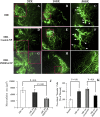
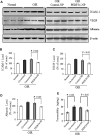
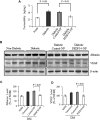
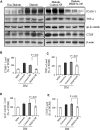
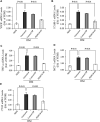

Similar articles
-
Fenofibrate-Loaded Biodegradable Nanoparticles for the Treatment of Experimental Diabetic Retinopathy and Neovascular Age-Related Macular Degeneration.Mol Pharm. 2019 May 6;16(5):1958-1970. doi: 10.1021/acs.molpharmaceut.8b01319. Epub 2019 Mar 26. Mol Pharm. 2019. PMID: 30912953 Free PMC article.
-
Nanoparticle-mediated expression of an angiogenic inhibitor ameliorates ischemia-induced retinal neovascularization and diabetes-induced retinal vascular leakage.Diabetes. 2009 Aug;58(8):1902-13. doi: 10.2337/db08-1327. Epub 2009 Jun 2. Diabetes. 2009. PMID: 19491211 Free PMC article.
-
Pigment epithelium-derived factor inhibits retinal microvascular dysfunction induced by 12/15-lipoxygenase-derived eicosanoids.Biochim Biophys Acta. 2015 Mar;1851(3):290-8. doi: 10.1016/j.bbalip.2014.12.017. Epub 2015 Jan 3. Biochim Biophys Acta. 2015. PMID: 25562624 Free PMC article.
-
[Cell biology of intraocular vascular diseases].Nippon Ganka Gakkai Zasshi. 1999 Dec;103(12):923-47. Nippon Ganka Gakkai Zasshi. 1999. PMID: 10643294 Review. Japanese.
-
A Review: Proteomics in Retinal Artery Occlusion, Retinal Vein Occlusion, Diabetic Retinopathy and Acquired Macular Disorders.Int J Mol Sci. 2017 Apr 28;18(5):907. doi: 10.3390/ijms18050907. Int J Mol Sci. 2017. PMID: 28452939 Free PMC article. Review.
Cited by
-
Bioactive peptides and proteins for tissue repair: microenvironment modulation, rational delivery, and clinical potential.Mil Med Res. 2024 Dec 5;11(1):75. doi: 10.1186/s40779-024-00576-x. Mil Med Res. 2024. PMID: 39639374 Free PMC article. Review.
-
H105A peptide eye drops promote photoreceptor survival in murine and human models of retinal degeneration.Commun Med (Lond). 2025 Mar 21;5(1):81. doi: 10.1038/s43856-025-00789-8. Commun Med (Lond). 2025. PMID: 40118996 Free PMC article.
-
PEDF and Its Role in Metabolic Disease, Angiogenesis, Cardiovascular Disease, and Diabetes.Biomedicines. 2025 Jul 21;13(7):1780. doi: 10.3390/biomedicines13071780. Biomedicines. 2025. PMID: 40722853 Free PMC article. Review.
-
Natural remedies proposed for the management of diabetic retinopathy (DR): diabetic complications.Naunyn Schmiedebergs Arch Pharmacol. 2025 Jul;398(7):7919-7947. doi: 10.1007/s00210-025-03866-w. Epub 2025 Feb 15. Naunyn Schmiedebergs Arch Pharmacol. 2025. PMID: 39954069 Free PMC article. Review.
-
Revolutionizing Retinal Therapy: The Role of Nanoparticle Drug Carriers in Managing Vascular Retinal Disorders.Clin Ophthalmol. 2025 May 15;19:1565-1582. doi: 10.2147/OPTH.S503273. eCollection 2025. Clin Ophthalmol. 2025. PMID: 40391093 Free PMC article. Review.
References
-
- Adamis A. P., Shima D. T., Tolentino M. J., Gragoudas E. S., Ferrara N., Folkman J., et al. (1996). Inhibition of vascular endothelial growth factor prevents retinal ischemia-associated iris neovascularization in a nonhuman primate. Arch. Ophthalmol. 114, 66–71. 10.1001/archopht.1996.01100130062010 - DOI - PubMed
LinkOut - more resources
Full Text Sources
Miscellaneous

